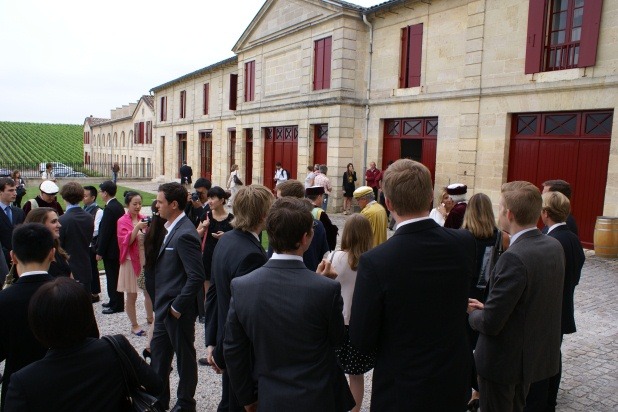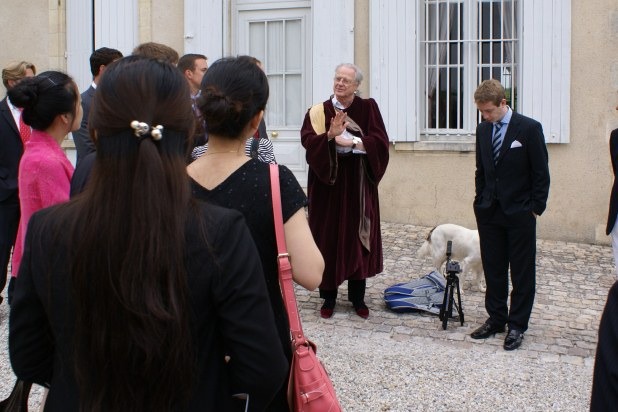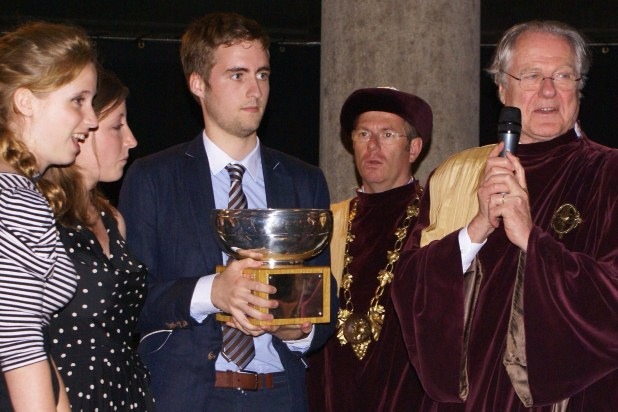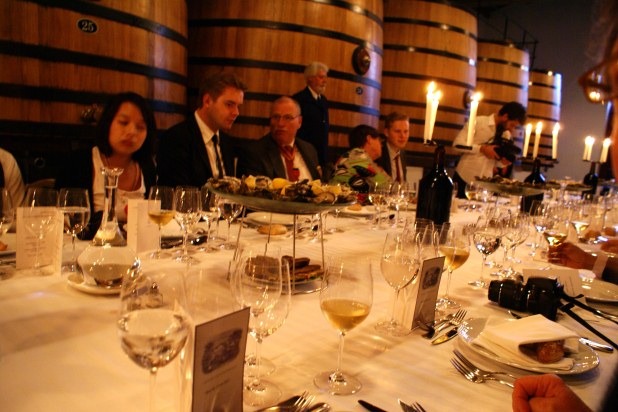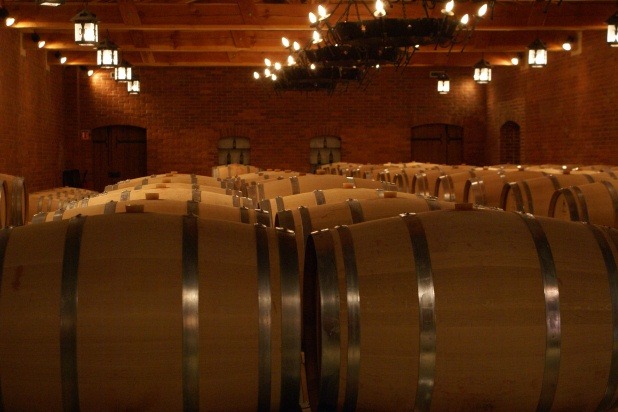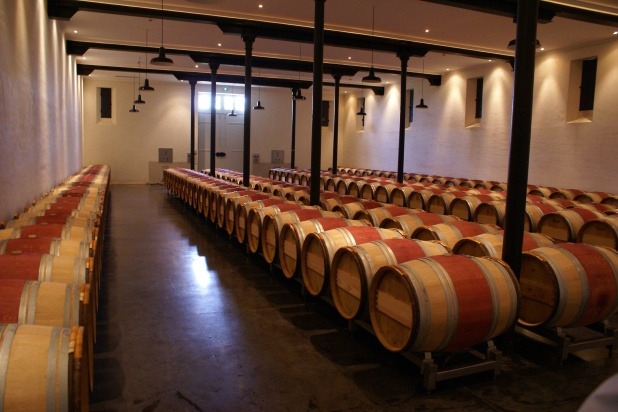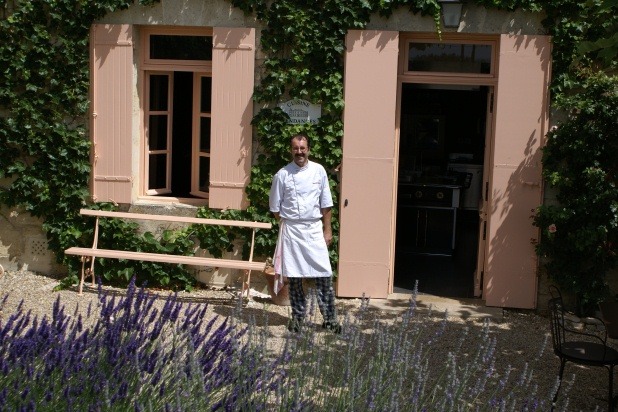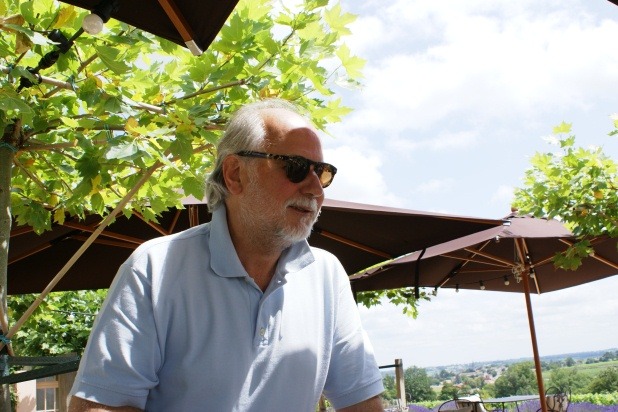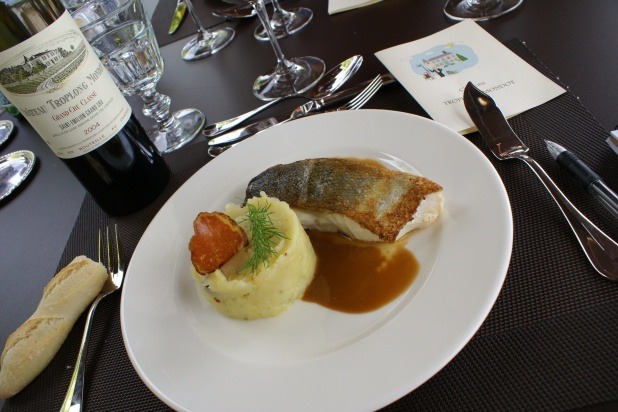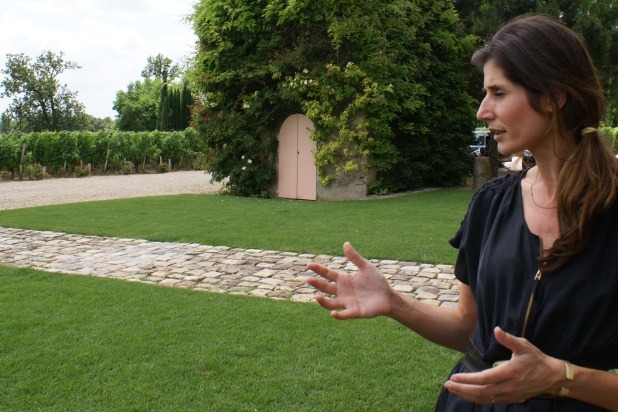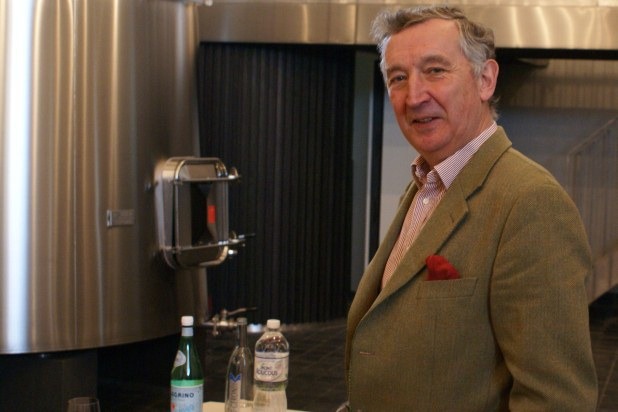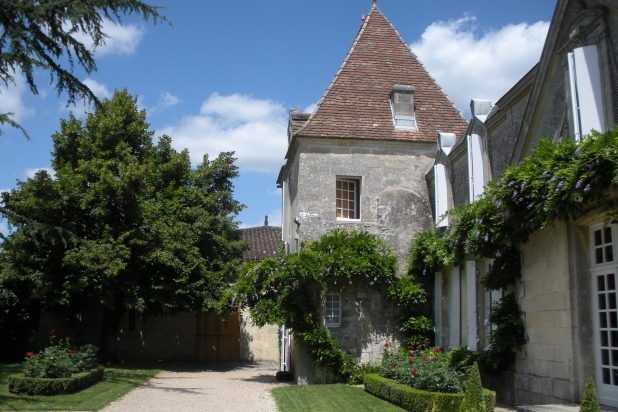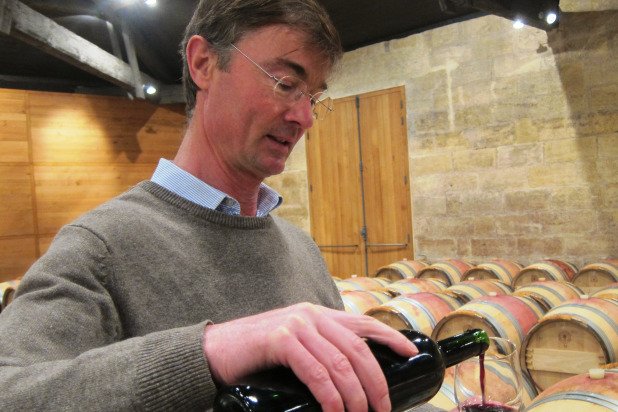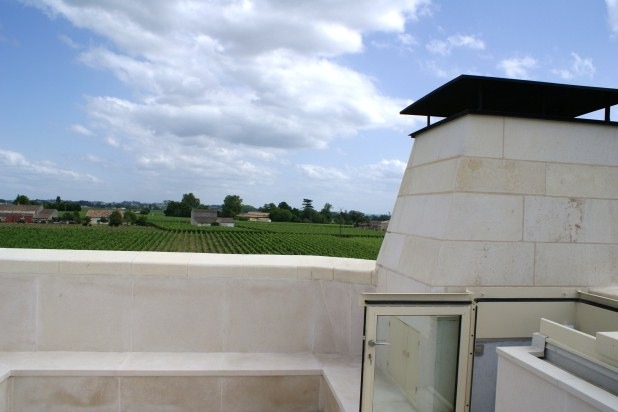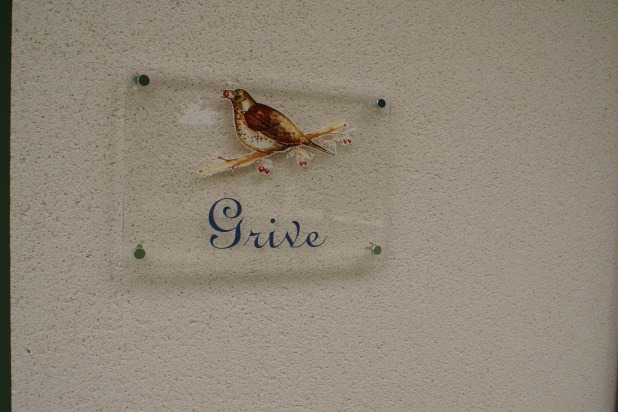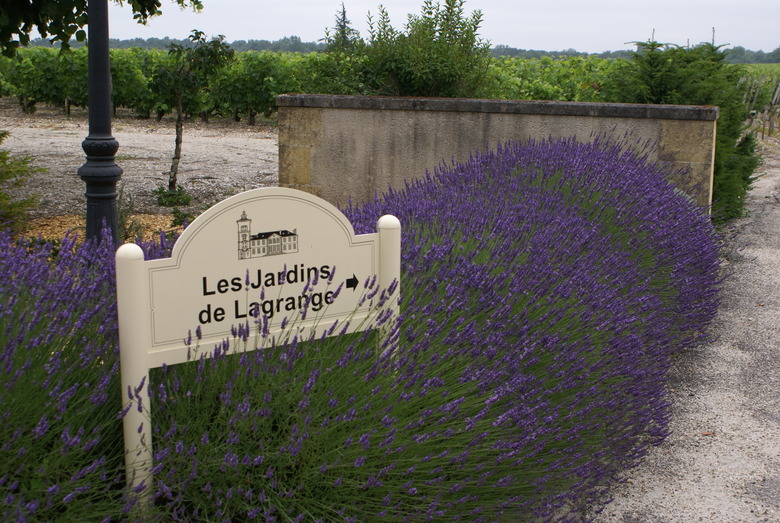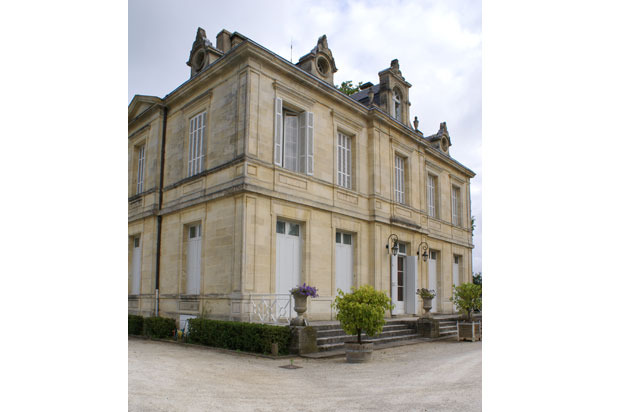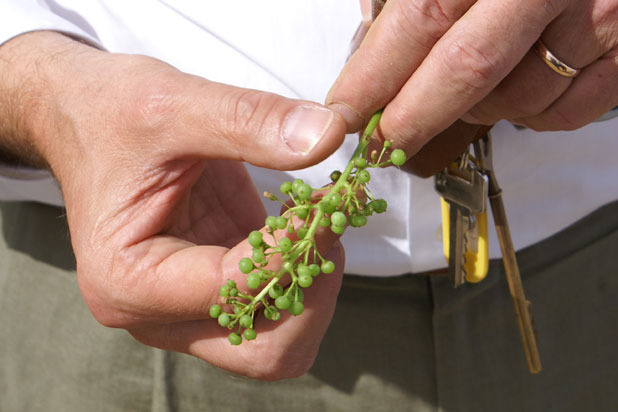Bordeaux Château Tour Slideshow
Château Lafite-Rothschild, 6 p.m., late June. I have been warned that Baron Eric de Rothschild does not like guests to be late for his events, but, as I don't do late very often, that is no problem. It is a lovely summer evening as guests assemble outside the winery in Pauillac in Bordeaux.
And now here is Baron Eric himself, walking across the lawn from his house, which also happens to be the most-famous château in the world, toward the cellars in his long maroon robe and carrying his mitre like a good scholar. He starts chatting up the graduate-level university students who for the past few days have been wined and dined up and down the Left Bank because they have proven they know a lot about Bordeaux wines. Tonight they will compete in the famous Lafite barrel room to see which three-person team from eight teams selected from the U.S., Europe, and Asia will win The Left Bank Bordeaux Cup. We plan to judge you very severely, the vintner warns the students with a laugh and an infectious grin.
Baron Eric pauses to say hello, and we talk for a few minutes. They are the tycoons of tomorrow, he observes as he looks back at the students. After conferring with Emmanuel Cruse, director of Château d'Issan and head of the sponsoring Commanderie du Bontemps, he and his fellow be-robed judges disappear inside. We follow through darkened chambers. Inside, after more than an hour of watching the business and law school students answer multiple-choice questions and identify wines and their provenances, the team from the EDHEC Lille emerges triumphant. The side from the University of Chicago is second. Last year's Number 3 team, the Wharton School from Penn, finishes out of the money, plus they suffer the indignity of having a team member tumble off the back of the stage while she was searching for better lighting to discern the color of a bricky claret.
Dinner is served around a very long table in another barrel room and is both simple and elegant oysters of the half shell with 2008 Bouscaut Blanc, salad russe with langoustines paired with 2001 Duhart-Milon in magnum (alas, one bottle is corked), hachis parmentier (a daring but apt choice: the French equivalent of shepherds pie, aka ground meat with spices and mashed potatoes) served with 1985 Lafite in double magnums. I don't linger around for the 1988 Rieussec to be matched with red fruit and mint en gelee. The Baron loves to have his students sing during their suppers, and shortly after the University of Chicago team breaks into a mercifully shortened version of "American Pie," I am behind the wheel of the first Citroen out of the parking lot.
I once met Laurent Dassault, the owner of the château, who is not here today, at his property in Clos de los Siete in Argentina, but I do not know Laurence Brun who runs the château on a day to day basis, as did her father before her. Robin, of course, does. She updates us on the upcoming re-classification of St-Émilion properties, then we are off to their barrel room to taste the 2011 vintage. As is so often the case, we enjoy more barrel samples than we set out to. We are close to the final blend, we are told as we taste through several cuvees. I can avow that the 2011 Dassault, when released, will have very dark fruit, hints of smoke and spiciness, and very supple tannins.
Next the wines all 2011 barrel samples. Magdelaine stands out for its delicious, intense fruit, almost a juiciness, though it's not tremendously long on the palate. Belair-Monange (purchased as Belair by Moueix in 2009) is intense and long, lots of chocolate and darker fruits with some chalkiness. Latour Pomerol is tannic, tight, and earthy and promises to age well. Hosanna is very, very elegant with a little balsamic note to go with the chocolate. LaFleur-Petrus is the most generous of the group, big and almost sweet with a savory finish that is quite distinct, while the Trotanoy has violets on the nose, full red cherries, and a finish like toasted meringue.
Château Troplong Mondot, 12:30 p.m. In addition to having some of the best wines in St-Émilion, Troplong Mondot, situated near the water tower east of the city, also has some of the best hilltop views, looking out in all directions of the compass. It's a great venue for its guest accommodations Les Belles Perdrix, which includes a small house in the vineyards.This spring Troplong added its own restaurant. Today, we are eating on the patio with nice breezes and sunny vistas to accompany chef Jrome Cadillat's three-course menu with two or three choices per course. Beds and planters of fragrant lavender than would put Provence to shame surround us.
While we are enjoying Cadillat's amuse bouches of foie gras on toast and whipped lobster in tasting spoons, the multi-talented owner, Xavier Pariente, drops by the table with his dogs and a friendly bottle of Laurent Perrier. His daughter, Margaux, the château's marketing manager, doubles today as our host.
Robin suggests we order a bottle of the 2004 Troplong, and we find it is developing nicely — earthy, dark and rich, almost like liquid chocolate bread. Although I'm having a tomato and chevre millefeuille and roasted cod pave with a shellfish coulis and crushed potatoes with olives, this is one of those delightful Bordeaux lunches where we drink great red wine and eat delicious food, and everyone discards any pretentious concerns about mixing and matching.
After a baba au rhum, Margaux doffs her apron and takes us on a tour of the sweeping vineyard's 29 continuous hectares or 72 acres, very large for St.-Émilion and the new cellar expansion to take care of all those liquid grapes. The pièce de résistance is a barrel sample of the Troplong Mondot 2011, which has lots of volume, lots of dark cherries, and a long exit from the palate. We then make our own belated exit after a flurry of goodbyes.
Le Pin & Vieux Château Certan, 3:30 p.m. Le Pin is, of course, a legend, the most famous and most likely the best of the garagiste wines. When I first visited the very small estate a few years ago and met Jacques Thienpont and his wife Fiona Morrison, the house with the garage was still there, uneven floor and all. When I came back this spring during primeurs, the annual barrel tastings, to sample the 2011 vintage with Jacques, the structure had been reconfigured around the now-expanded garage. The new building is a discreet, small, and very modern château.
Whenever Jacques and Fiona are in Belgium, the entrance to Le Pin comes through Vieux Château Certain, or VCC, a couple of vineyards away. There, Jacques' cousin, the very talented Alexandre Thienpont, makes wine. The Thienponts are another of those extended winemaking clans of Bordeaux, so there often is a blurred line between who is doing what at VCC and Le Pin.
We start at VCC, where Alexandre pours us the 2011. The 2011 vintage was a cab [Franc] year, he says, explaining that in some years merlot dominates, but this was not one of them. Even so, the wine has its characteristic elegance, although perhaps a bit more boldness than normal. It's why VCC has always been one of my favorite Right Bank wines.
Then we are off to Le Pin. After we tour the very small cellar there, Alexandre says, "I think we can open a half-bottle, dont you?" and chooses a 2010 Le Pin. The wine has huge volume in the mouth, but it, too, is sophisticated with that little earthy, almost-caramel coda that characterizes the finish of a Le Pin. We take our glasses upstairs a couple of levels to an unusual open, but sunken, balcony. Standing, we can see the vineyards of Pomerol, St.-Émilion, and even a glimpse of Lalande. Seated, we have complete privacy. Even in architecture, Le Pin goes its own way!
Alas, there comes a time to jump off the express. There is a grand celebration in Bordeaux tonight, the Commanderies Fête de la Fleur. From my previous attendances here a few years ago at Château d'Issan I know it will be a grand event. But I have already sent my regrets. Instead, I take the back road to Macau, then join D2, the lovely wine road that meanders through the Medoc. I stop at Margaux the town to get a large, cold beer at the market, then at a closing boulangerie for its last pizza. The owner insists on reheating it for me. Ten minutes later, I am alone at the isolated Château Lagrange, where I am staying in one of the new tourist cabins in a room called Le Grive the thrush. The château has now closed for the weekend, and I am the only guest and the only person around.
I leave my room door open and walk into the late afternoon sun and meander through the gardens at Lagrange beer in one hand, rustic pizza in the other. Life is good.
Chteau Dassault, 9 a.m., the morning of the following day. I am joined at Dassault by Robin Kelly O'Conner, who, bon vivant that he is, remained at last evening's affair at Lafite until the last drinking song was mangled and the last bottle emptied. Does anyone know Bordeaux better than Robin the ambassador, consultant, businessman? Only when you can name one Bordelais who is on friendly terms with every other Bordelais will I even consider another candidate.
Château Hosanna, 11 a.m. After stopping by the quayside warehouses of Ets. Jean-Pierre Moueix in Libourne to say hello to Christian and Edouard Moueix, we arrive at Hosanna to taste wines from the Moueix stable of Pomerol and St-Émilion estates. We are joined by Ray Isle, wine editor of Food & Wine and long-time tasting comrade-in-arm, and young Gabriella Macari from Macari Winery on Long Island, who is in Europe on business. The cast is complete as Frederic Lospied from Moueix takes us on a tour of the property and the wines. Do you know that Hosanna was at first the backup name for Opus One? Lospied asks. We did not. So when we bought this property in 1998 we changed it to Château Hossana [from Certan-Giraud]. As we look at clusters of young grapes, he says, "We had some problem this year with coulure [poor cluster formation], but in a way it serves as a natural selection."
